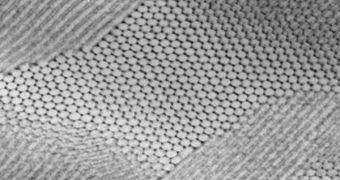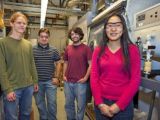Many scientists in the international community believe that nanomaterials hold the key to tomorrow's technologies. They may be used in medicine, computing, electronics and environmental sciences, but one of the issues that prevents that from happening right now is the materials' inability to self-assemble, as in to produce highly ordered, ready-to-use structures all by themselves. This limitation was recently surpassed by experts at the US Department of Energy's (DOE) Lawrence Berkeley National Laboratory (Berkeley Lab), who discovered how to make nanoparticles from complex arrays on their own.
“We've demonstrated a simple yet versatile approach to precisely controlling the spatial distribution of readily available nanoparticles over multiple length scales, ranging from the nano to the macro. Our technique can be used on a wide variety of nanoparticle[s] and should open new routes to the fabrication of nanoparticle-based devices including highly efficient systems for the generation and storage of solar energy,” polymer scientist Ting Xu explains.
The expert holds a joint appointment in the Berkeley Lab Materials Sciences Division and the Departments of Materials Sciences and Engineering, and Chemistry, at the University of California in Berkeley (UCB). Various types of molecules were added to the nanoparticle mixes, in order to coerce the particles themselves into forming one-, two- or three-dimensional arrays, the scientist explains. The paper, entitled “Small molecule-directed nanoparticle assembly towards stimuli-responsive nanocomposites,” appears in the latest issue of the leading scientific journal Nature Materials.
“Precise control of the spatial organization of nanoparticles and other nanoscopic building blocks over multiple length scales has been a bottleneck in the bottom-up generation of technologically important materials. Most of the approaches that have been used so far have involved surface modifications,” Xu says of the necessities underlying his team's investigations. “Bring together the right basic components – nanoparticles, polymers and small molecules – stimulate the mix with a combination of heat, light or some other factors, and these components will assemble into sophisticated structures or patterns. It is not dissimilar from how nature does it,” the expert concludes.

 14 DAY TRIAL //
14 DAY TRIAL // 
